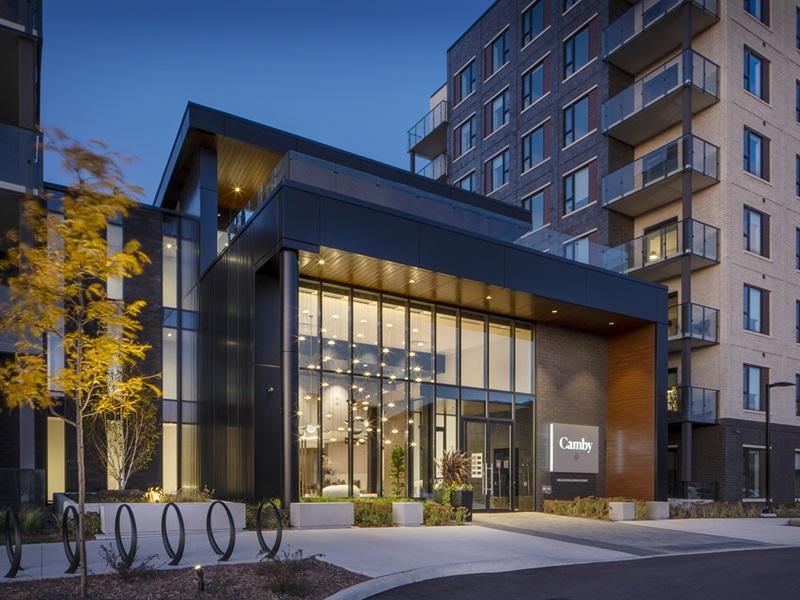When people think about the unaffordable housing prices of Toronto, they generally attribute it to the supply and demand of the housing market.
While this is true, as supply and demand is a major factor dictating the cost of housing, most people do not realize there are other critical factors at play which unnecessarily inflate costs.
1. Underground parking requirements
Construction in Toronto is needlessly expensive due to the building regulations and bylaws in place, which force developers to build a luxury product rather than affordable.
The greatest waste of space mandated in almost all developments in Toronto is parking.
While above-ground parking pads are not too expensive to build in comparison to the large houses they are servicing, underground parking can cost hundreds of thousands of dollars to construct.
Costs for the construction of underground parking in Toronto according to Altus Group’s 2021 Canadian Cost Guide range from $160 to $200 per square foot!
Given the range of public and active transportation options located throughout Toronto, it is odd that most large developments still require such expensive parking, not to mention parking is usually not on the list for an individual who is looking for affordability.
2. Outdated zoning and land-use policies
Although Toronto has stepped it up in recent years by allowing the development of secondary units in single-family homes, along with the laneway, garden suites, and missing-middle (Expanding Housing Options in our Neighbourhoods) programs, the city still maintains very restrictive policies and systems that hinder affordable development.
As an example, 35 per cent of all land in Toronto is designated as Neighbourhood Zones, which allow only low-density detached homes to be built. This is a huge problem contributing to the supply of housing available to the public as these restrictive policies force developers to build inefficiently on the spaces they have.
Rooming houses are another type of affordable dwelling that are either outright restricted, or difficult to develop in Toronto. According to the city, rent for rooming houses can start as low as $400 and be as high as $700.
Currently, the zoning bylaws governing rooming houses are being examined and voted on by city council, but continue to experience delays and roadblocks as many councillors are opposed.
There are roughly 350 legal rooming houses in Toronto, but the city continues to discover many unlicensed operations, which further indicates the need for affordable housing.
3. “Condo” fees
On paper, condos should be much more affordable than single-family homes. However, the high maintenance fees for condos often make them very expensive to live in.
These maintenance fees, which according to Condos.ca are on average $0.64 per square foot, can add up to $768 per month in a 1,200-square foot, three-bedroom condominium. When you compare this with the maintenance fees of a similarly sized detached home, the price is somewhere around $250 per month.
So, why are condominium maintenance fees so high?
The first major reason is large condo buildings require many utilities such as elevators, underground parking and HVAC systems throughout the building which have pricey replacement and maintenance fees.
These buildings are often also mandated by the city to have amenity areas which contribute to the high fees but have historically been under-utilized by the residents.
Overall, these fees could be brought down by better selection and design of systems, and the reduction of amenity spaces as well as the parking requirements.
On top of these expensive fees, the province mandates condos save money in a reserve fund to provide ongoing repairs and to supplement long-term replacement requirements for things such as the building envelope.
This leads to a very high bill at the end of every month.
4. Inflexible built environment
Density can only be successfully added when there is usable public transit and urbanism. Without these design elements, dense environments will only contribute to the congestion of cars, leading to unattractive places to live.
Luckily, there are a few places within the GTA which can be used as examples of how the ideal environment can be created in the right circumstances.
One example is the Vaughan Metropolitan Centre area, which was transformed from a car-oriented development to a transit-oriented development. This was thanks to the introduction of a new subway station and efficient active transportation network and parks.
Sadly, this transformation of space would be hard to replicate elsewhere as the area was made up of large non-residential lots and had few neighbouring properties to hinder the process.
A second example is the Eglinton crosstown LRT and how it has sparked intensification around its route. This area was perfectly designed for an LRT line because it is a tight grid allowing for great walkability from each transit stop.
Eglinton West was able to become a transit-oriented area due to its more compact grid form.
While these projects sound great, the reality is the majority of Toronto’s built form was designed and constructed in the post-war era, a time when the car was the centre of all planning.
This focus on the car resulted in streets being built wide and buildings constructed with space in between for the car.
With the expectation of people owning cars, local streets became less direct and compact as people were walking less, negatively impacting the effectiveness of transit in the long term. The suburbs reflected this new reality to a greater extent, making intensification projects difficult without having to accommodate for personal vehicles.
These decisions from over half a century ago have had an immense impact on the affordability of the future.
5. “Must own a house with a backyard” state of mind
Due to the size of the GTA’s population, it is just not feasible for every family to live in a large single-detached dwelling with a large backyard and maintain reasonable commutes.
Over the past few decades, there has been an increasing acceptance for those without children to live in denser living accommodations.
However, those with children still maintain the mentality that it is damaging to children’s development to not have a backyard to play in.
What people with this mentality often do not realize is that this lifestyle trades off independence for a backyard which is often underused. Teenagers living within the seas of urban sprawl grow up relying on their parents to move them around.
It is unfortunate this obsession of the backyard does not end with homebuyers, but is also shared by policymakers. This obsession directly contributes to why land-use policies have been so defensive of the single-family home and its “character.”
Without meaningful change around the concept of raising a child without a backyard, we are doomed to continue to see existing families get priced out of their homes and young couples struggle to afford a place to start their own families.








